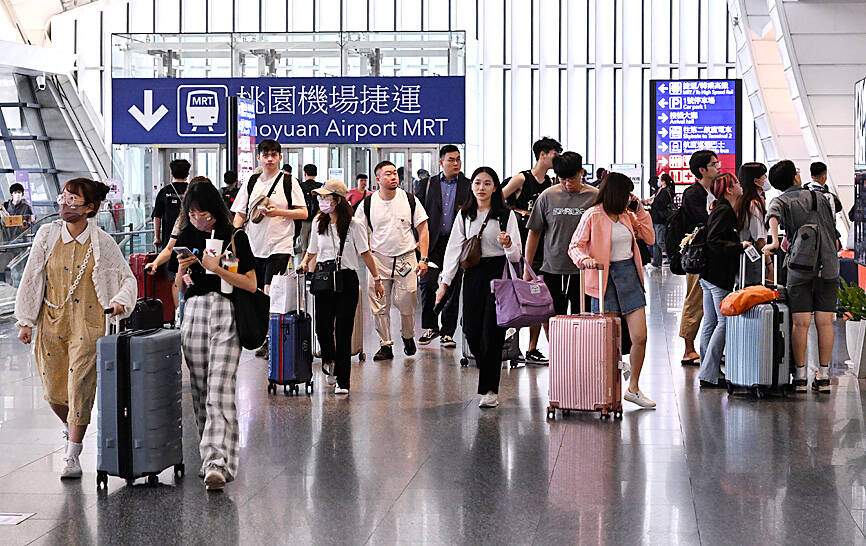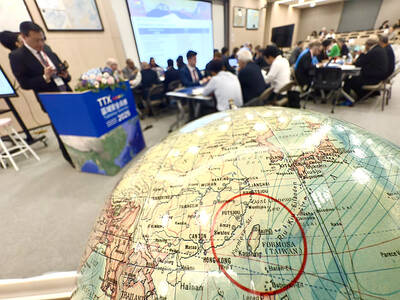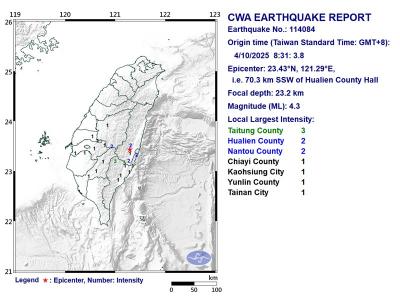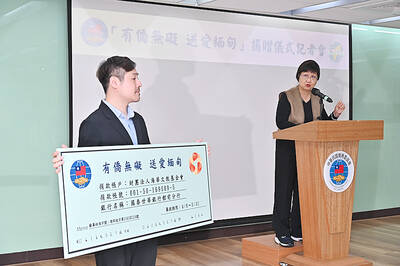The cost of air travel on Taiwan’s 23 domestic routes is to be reduced by 2.7 to 6.9 percent starting on Aug. 1, due to a recent decline in aviation fuel prices, the Civil Aeronautics Administration (CAA) announced yesterday.
The price of a one-way ticket on the Taipei-Kinmen route operated by Mandarin Airlines would drop the most, declining NT$182, or 6.9 percent, from NT$2,641 to NT$2,459, the CAA said in a statement.
The smallest decrease would be the price of a one-way fare between Taitung and Green Island. It would drop 2.7 percent from NT$1,130 to NT$1,100.

Photo: Liu Hsin-de, Taipei Times
One-way tickets on the other 20 domestic routes would decline by NT$33 to NT$159, the CAA said.
If people have already bought tickets for flights departing on or after Aug. 1, the airline is obliged to refund the difference, the agency said.
The average price of aviation fuel from May to this month fell below the benchmark price of NT$21.74 per liter, the threshold that determines whether domestic airfares rise or fall, the CAA said.
Aviation fuel prices fell below NT$23 a liter in May for the first time since March last year, after peaking at NT$35.24 a liter in July last year.
The price adjustment mechanism was first established by the CAA in 2014 in response to changes in fuel prices.
It stipulates that when the average price of domestic aviation fuel over three consecutive months drops below the threshold, the price of tickets must be reduced accordingly.

Taiwan is stepping up plans to create self-sufficient supply chains for combat drones and increase foreign orders from the US to counter China’s numerical superiority, a defense official said on Saturday. Commenting on condition of anonymity, the official said the nation’s armed forces are in agreement with US Admiral Samuel Paparo’s assessment that Taiwan’s military must be prepared to turn the nation’s waters into a “hellscape” for the Chinese People’s Liberation Army (PLA). Paparo, the commander of the US Indo-Pacific Command, reiterated the concept during a Congressional hearing in Washington on Wednesday. He first coined the term in a security conference last

DEFENSE: The National Security Bureau promised to expand communication and intelligence cooperation with global partners and enhance its strategic analytical skills China has not only increased military exercises and “gray zone” tactics against Taiwan this year, but also continues to recruit military personnel for espionage, the National Security Bureau (NSB) said yesterday in a report to the Legislative Yuan. The bureau submitted the report ahead of NSB Director-General Tsai Ming-yen’s (蔡明彥) appearance before the Foreign and National Defense Committee today. Last year, the Chinese People’s Liberation Army (PLA) conducted “Joint Sword-2024A and B” military exercises targeting Taiwan and carried out 40 combat readiness patrols, the bureau said. In addition, Chinese military aircraft entered Taiwan’s airspace 3,070 times last year, up about

A magnitude 4.3 earthquake struck eastern Taiwan's Hualien County at 8:31am today, according to the Central Weather Administration (CWA). The epicenter of the temblor was located in Hualien County, about 70.3 kilometers south southwest of Hualien County Hall, at a depth of 23.2km, according to the administration. There were no immediate reports of damage resulting from the quake. The earthquake's intensity, which gauges the actual effect of a temblor, was highest in Taitung County, where it measured 3 on Taiwan's 7-tier intensity scale. The quake also measured an intensity of 2 in Hualien and Nantou counties, the CWA said.

The Overseas Community Affairs Council (OCAC) yesterday announced a fundraising campaign to support survivors of the magnitude 7.7 earthquake that struck Myanmar on March 28, with two prayer events scheduled in Taipei and Taichung later this week. “While initial rescue operations have concluded [in Myanmar], many survivors are now facing increasingly difficult living conditions,” OCAC Minister Hsu Chia-ching (徐佳青) told a news conference in Taipei. The fundraising campaign, which runs through May 31, is focused on supporting the reconstruction of damaged overseas compatriot schools, assisting students from Myanmar in Taiwan, and providing essential items, such as drinking water, food and medical supplies,